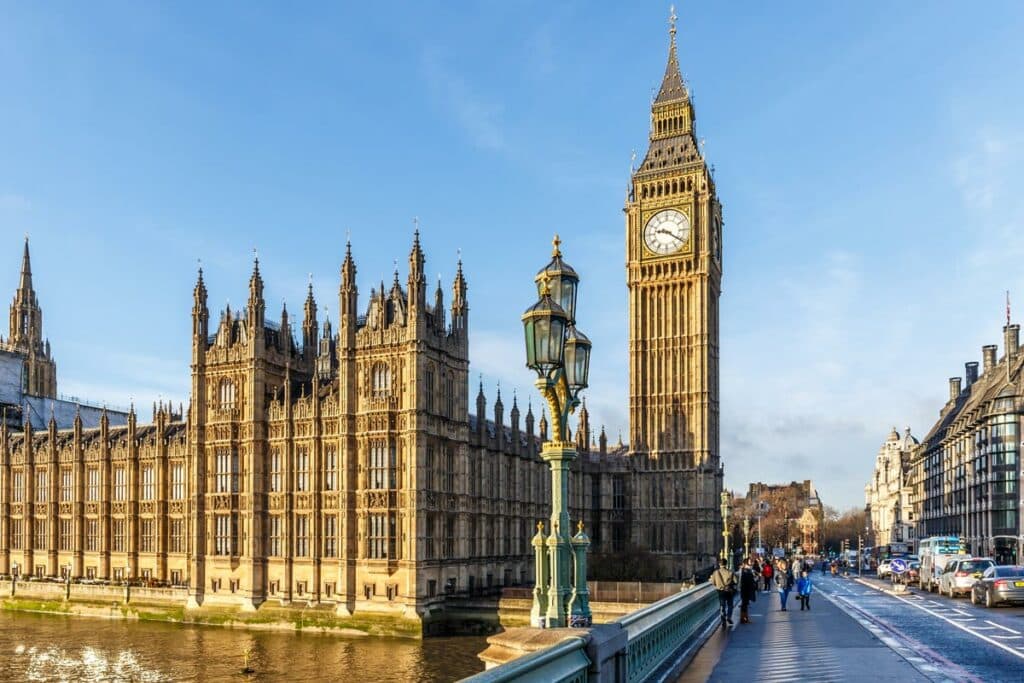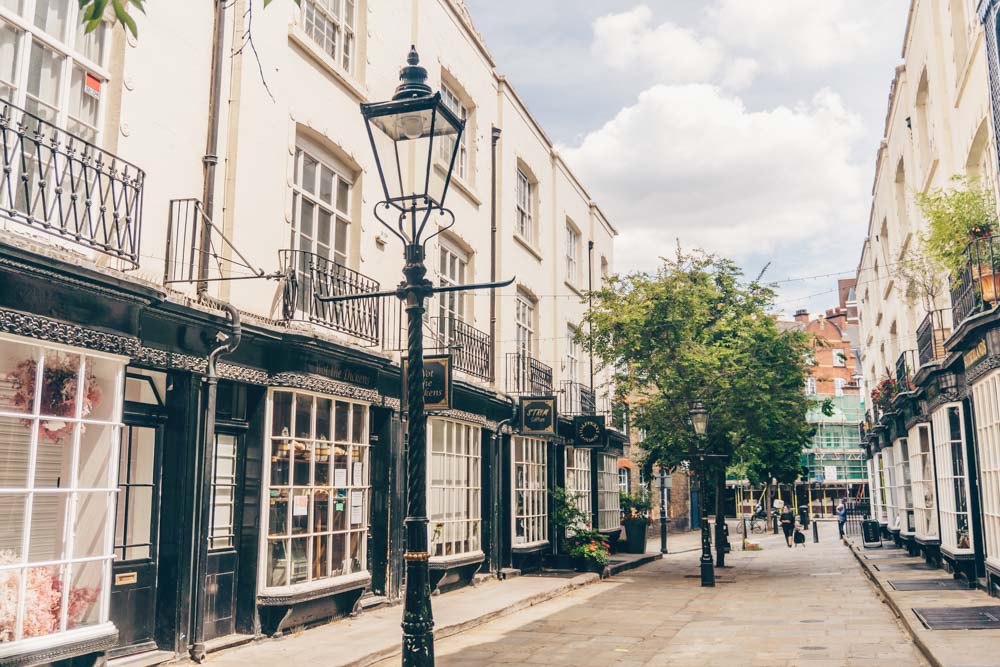Have you heard of the London Necropolis Railway Station? London and the railway have a rich, interwoven history that dates back over 170 years – many are underground, and some have a hidden purpose.
Anyone interested in London’s history will also know that grizzly and macabre happenings have never been far from London’s surface. London’s Necropolis Railway Station is no exception.
But first of all, let us tell you what this peculiar railway station was used for…
The London Necropolis railway was an almost daily service from Waterloo Station to Brookwood Cemetery near Woking, in Surrey, between 1854 and 1941. The service carried up to 2,000 bodies each year to their final resting place. Very, very creepy.
So, settle down as we uncover the history of London’s Necropolis Railway Station.
Why Visit London Necropolis Railway Station?
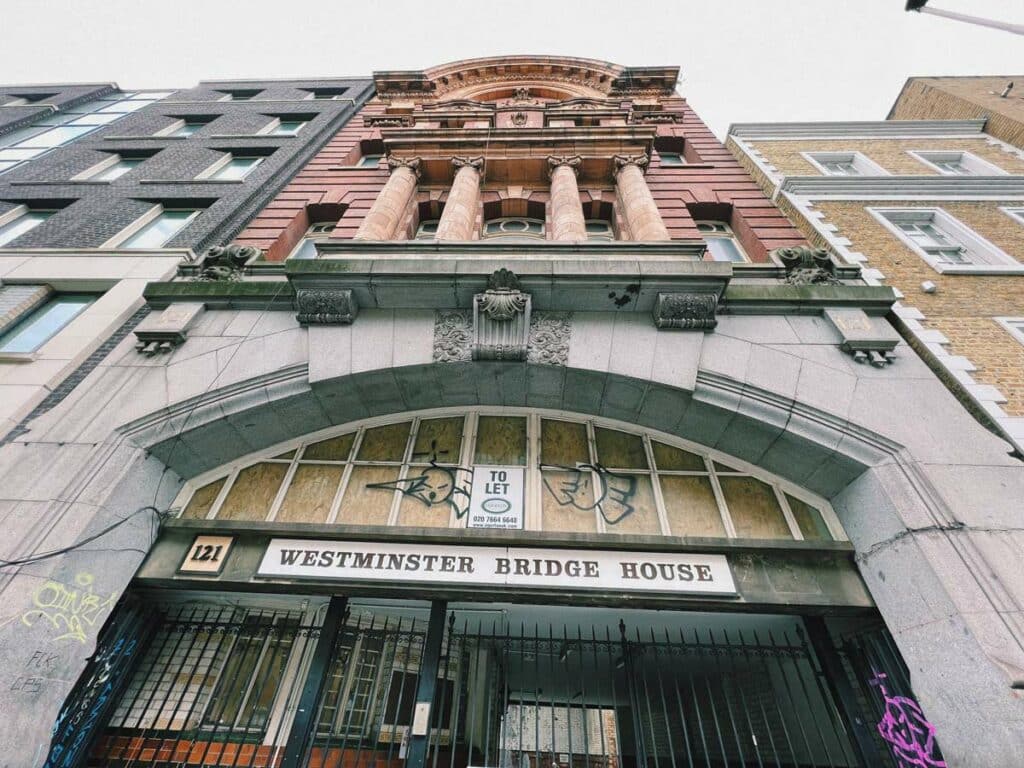
There is precious little of the actual railway still visible to the human eye today, as large parts of the London terminus were destroyed during the Blitz in 1940 and 1941. This was thanks to Waterloo being a prime target for Luftwaffe bombers.
Where to See the Station
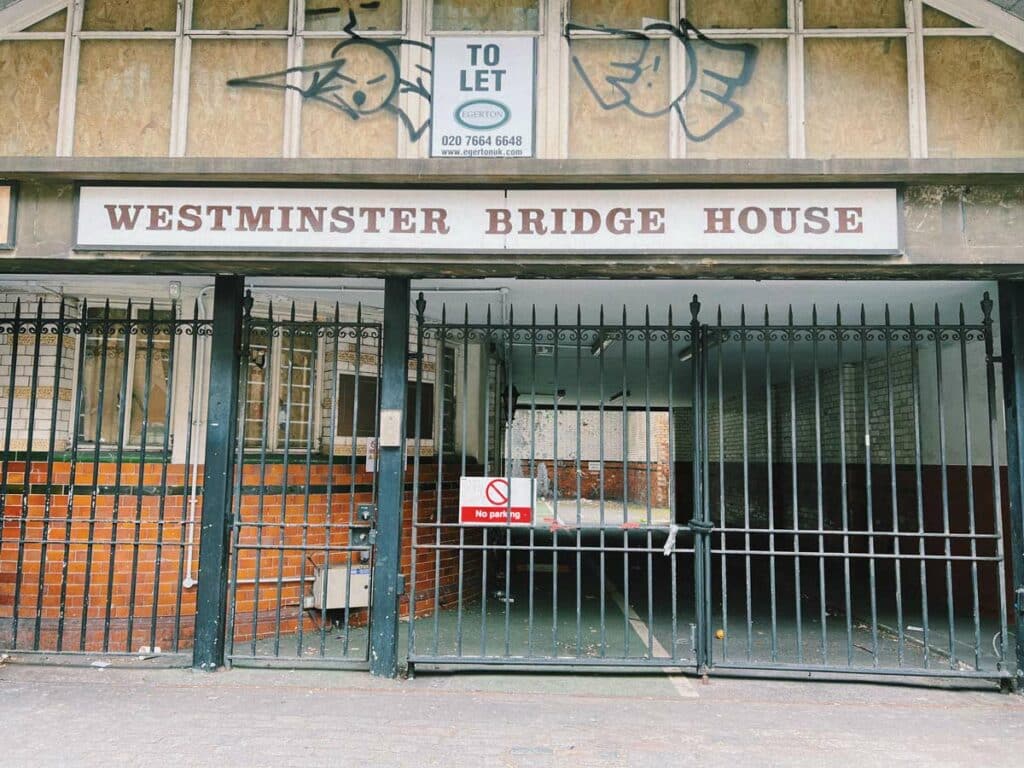
A few parts of the railway are still visible at Brookwood Cemetery, with the remains of the South station forming part of the Russian Orthodox monastery on the site.
Meanwhile, Leylandii planted across the former line to the mausoleum of Sharif Al-Hussein Ben Ali, who passed away in 1998, now essentially hides the remains of the North station from public view.
In London, the facade of the building that contained the offices of the London Necropolis Company remains visible. And the building also acts as the first-class entrance to the second London Terminus, built in 1902.
121 Westminster Bridge Road, now Westminster Bridge House, stands near Lambeth North Station on the Bakerloo Line. It’s now a Grade II listed building by Historic England and one of the most beautiful examples of an early 20th-century office building available in London today.
History of the London Necropolis Railway
Here’s what you really want to know – how this creepy railway came to be.
Overpopulation
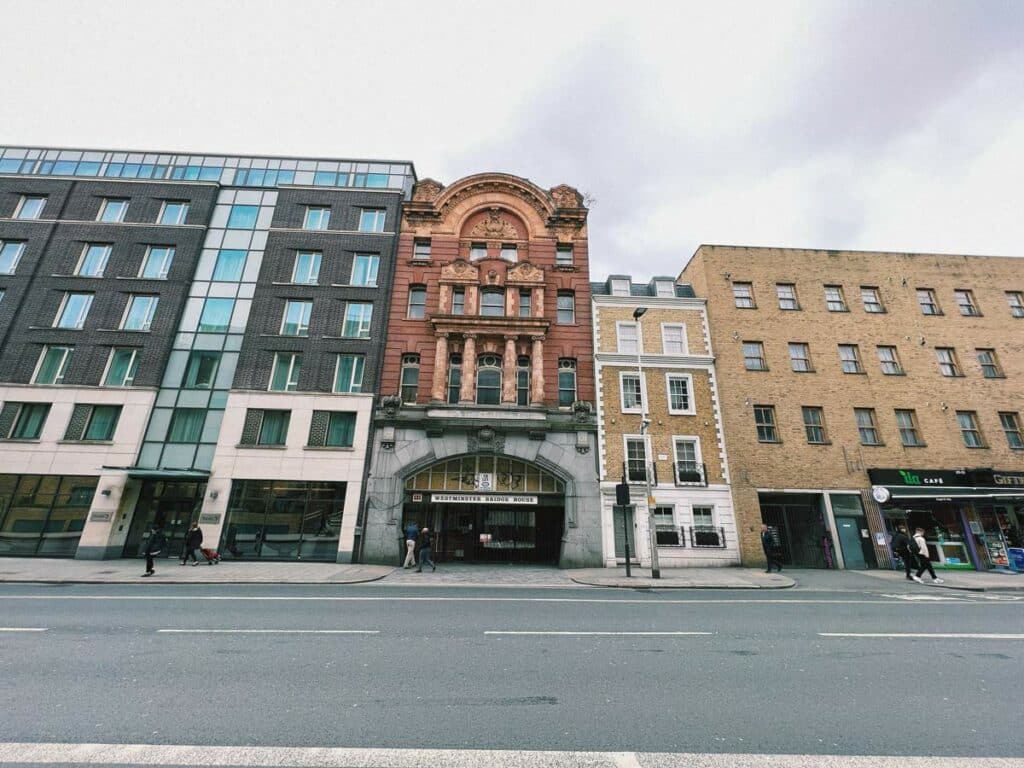
The idea of transporting bodies from London to leafy Surrey originated in the mid-19th Century as a response to the increase in London’s population, which doubled between 1801 and 1851, and the increasingly crowded churchyards in the capital.
As churchyards exceeded capacity, the effluvium from decaying corpses contaminated London’s water supply leading to the deaths of thousands more residents, who required burial, exacerbating the whole rotten cycle to incredible lengths.
The epidemic that led to change was the devastating cholera disease that decimated Londoners between 1846 and 1849. With more than 14,500 deaths as a result, there was yet more pressure on London’s bursting burial grounds.
1851 Burials Act
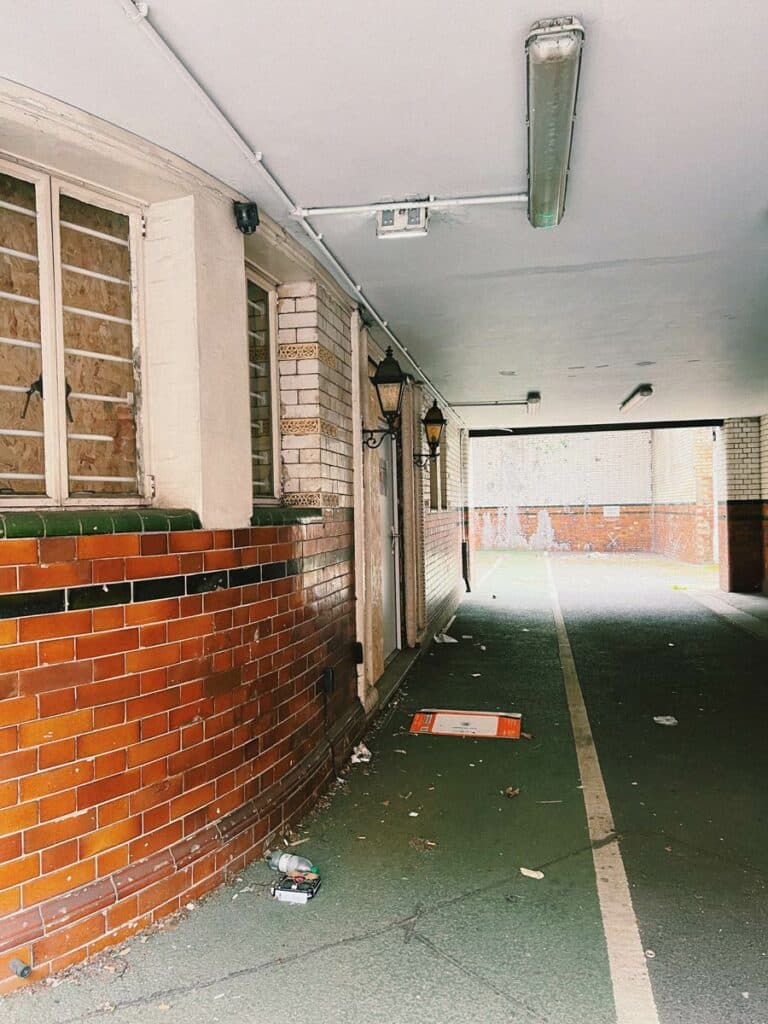
Enough was enough, and in 1851 Parliament acted to confront the public by passing the 1851 Burials Act (more concise than the official “An Act to Amend the Laws Concerning the Burial of the Dead in the Metropolis.”), which, in simple terms, forbade any new burials in central London.
While the act did half the job, Parliament’s powers did not extend to abolishing death. So, with people still dying in their droves, vast cemeteries were established in what is now the Greenbelt, where Londoners could safely be laid to rest.
One such burial yard was established by the slightly grizzly-named enterprise of “London Necropolis and National Mausoleum Company” (LNC), formed in 1852, with a mandate to develop Woking Common at Brookwood in Surrey, 23 miles from London.
After rejecting the notion of transporting coffins by horse and hearse, the idea was formed to build a special railway service to carry the deceased and mourners from London to Brookwood and, in the case of those still living, back again.
Overcoming Obstacles
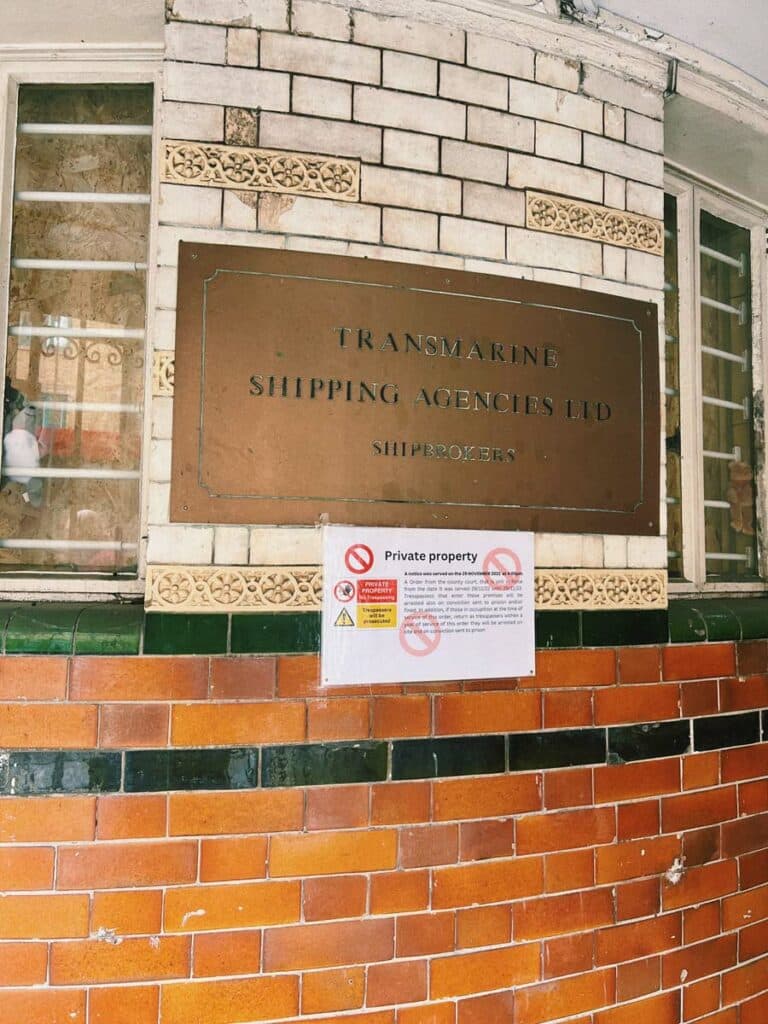
Many people raised several objections over the running of this skeleton service. Charles Bloomfield, the Bishop of London, felt that trains were incompatible with Christian funeral services.
He also argued that it was unacceptable for families from different classes to share the same train for the journey to Brookwood. Nothing like a bit of class snobbery!
Meanwhile, the shareholders of the London and South Western Railway (LSWR) raised concerns that using their tracks and rolling stock would put off passengers appalled at the prospect of sharing transport with corpses.
Compromises were reached as the LNC agreed to introduce three passenger classes, first, second, and third. Each class would be fully segregated at stations at each end of the line and on the train.
In addition, LNC and LSWR agreed to run a special train service specifically from Waterloo Bridge (as London Waterloo was known) to Brookwood Cemetery, meaning that everyday passengers wouldn’t face the inconvenience of travelling alongside the dead.
The Operation Begins
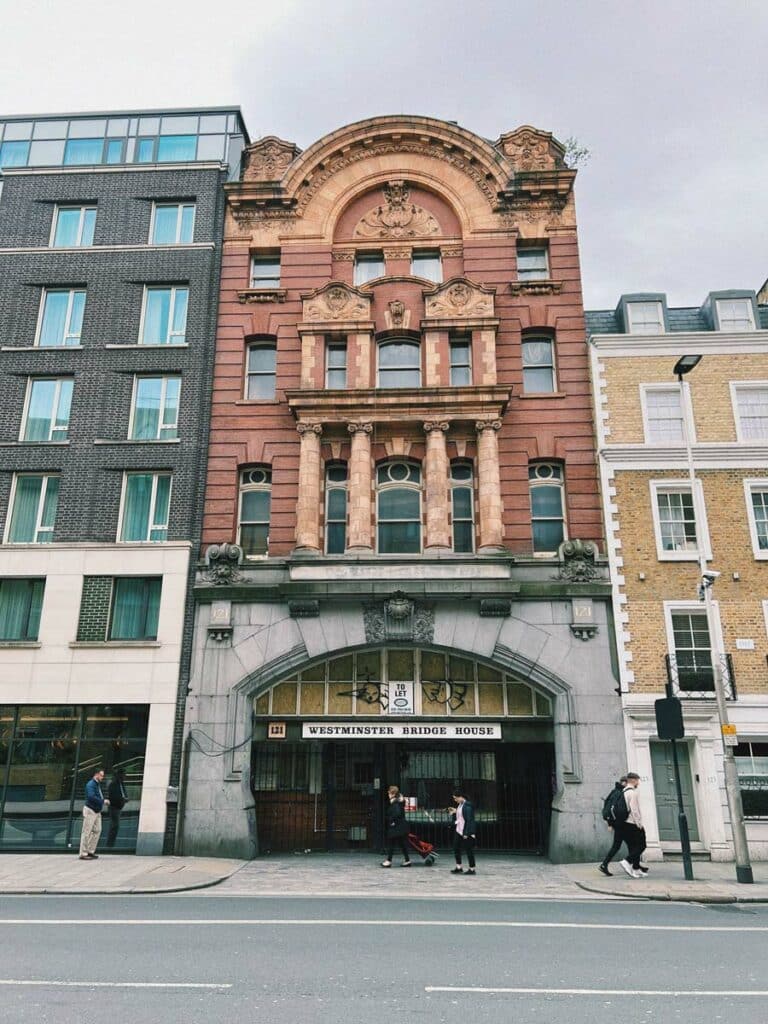
Building on the London terminus began in June 1854 at 188 Westminster Bridge Road, allowing services to start in November. Services began steaming out of Waterloo daily, full of the deceased and their grievers towards their final resting place in the leafy Surrey hinterlands.
Built over multiple floors, mourners entered on the ground level before moving upstairs to a waiting room for first and second-class mourners and a smaller hall for third-class grievers. Most of the ground floor was occupied by two mortuaries where bodies were stored until boarding the train.
First-class coffins were first loaded on the train, with mourners offered the opportunity to assemble on the platform and watch their loved ones get loaded onto the carriage. The second-class mourners and coffins were next before the third-class coffins. Third-class mourners were, predictably, unable to witness their friends and families loading onto the trains.
Services left Cemetery Station at 11:35 am (11:20 am on Sundays) and passed to Necropolis Junction, arriving 50 minutes later. Mourners had a couple of hours at the burial ground before returning to London at around 2:30 pm.
A New Station for London
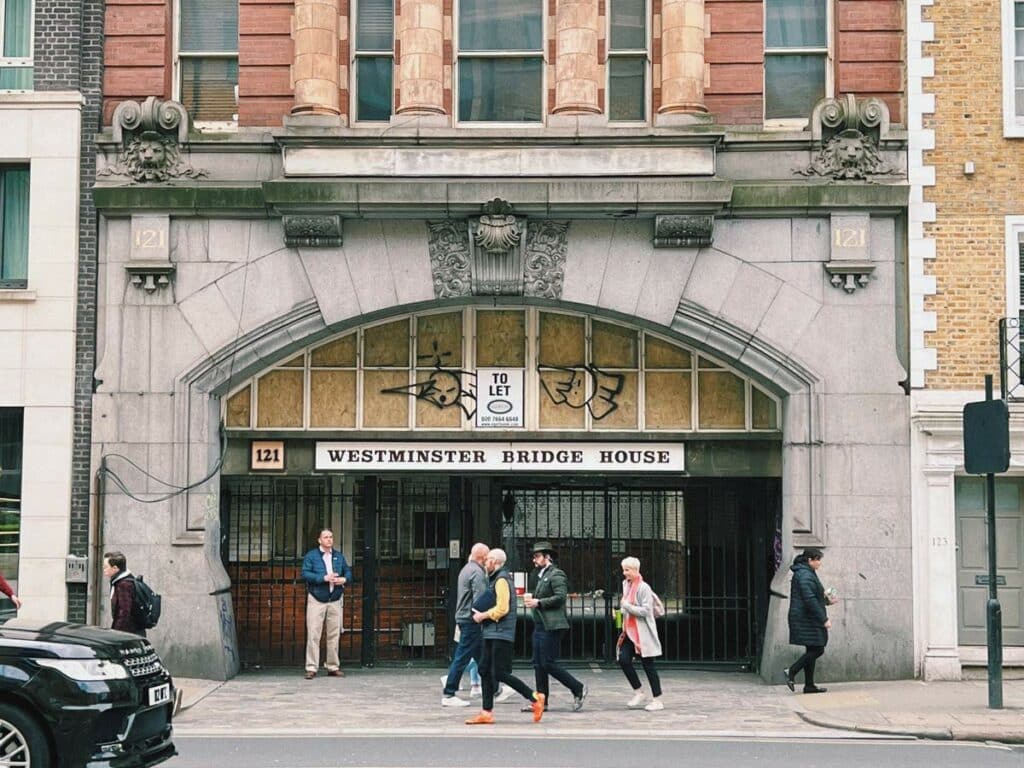
The LSWR significantly expanded Waterloo Station during the 1890s and made LSWR make an offer to the LCN for their current terminus, which stood in place of a proposed viaduct, in return for the LCN being given autonomy over the design of the new station.
Work started on the new station across the road at 121 Westminster Bridge Road in 1899 before completion on 8th February 1902 into the building that still stands today.
By this stage, demand had already begun to dwindle due to competition from other cemeteries run by London councils and the increasing use of cars that led to more convenient ways of transporting bodies.
Sunday services ended in October 1900, and by the 1930s, the number of services dropped to services running once or twice a week.
Hitting the Buffers
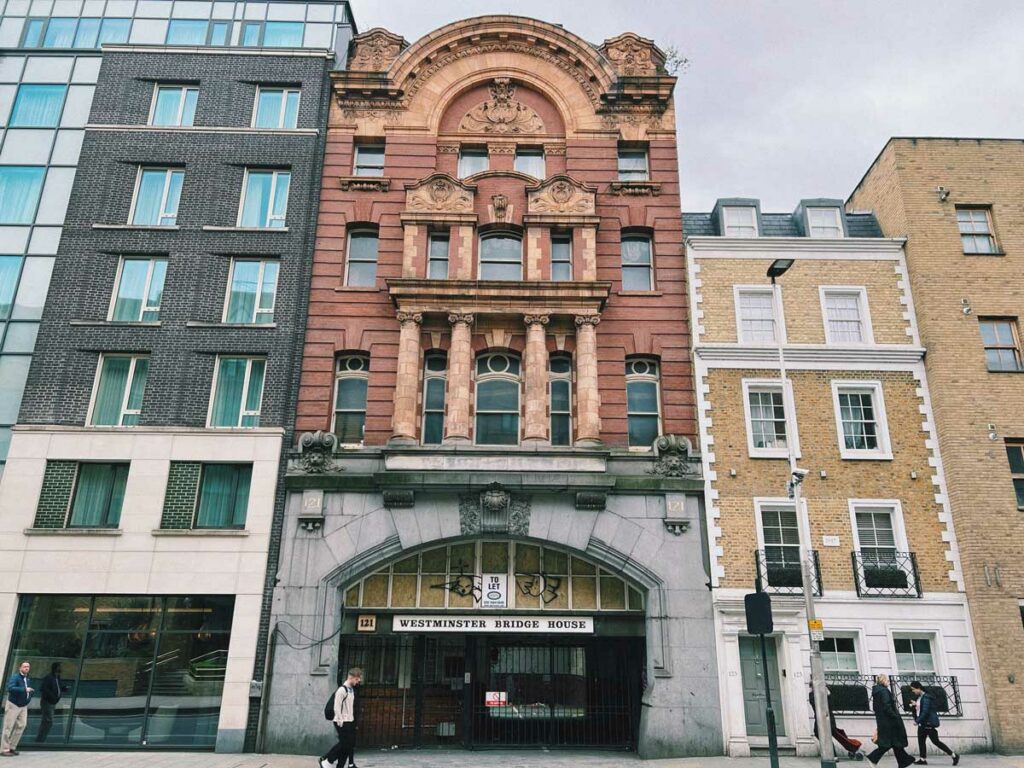
Edward Irish, a Chelsea Pensioner, boarded the train on Friday, 11th 1941, for his final journey leaving London Necropolis Station to his burial place at Brookwood. At this point, few onlookers knew this would be the last departure from the London Necropolis station.
The following week, a heavy German bombing raid decimated much of the terminus, destroying the rolling stock. Although the office building and first-class entrance survived, there was no way back for the Necropolis railway. On 11th May 1941, the station was declared closed.
Following the end of the Second World War, there was no appetite to resurrect the station or the Brookwood line, and the Terminus building was sold. It remains one of the most beautiful and complete historical buildings illustrating one of London’s secret railways, which is well worth a visit and nose around.
London Necropolis Railway Station: Practical Information
Address: 121 Westminster Bridge Road, London, SE1 7HR
London Necropolis Railway Station is closed to the public, but free to view from the outside.

